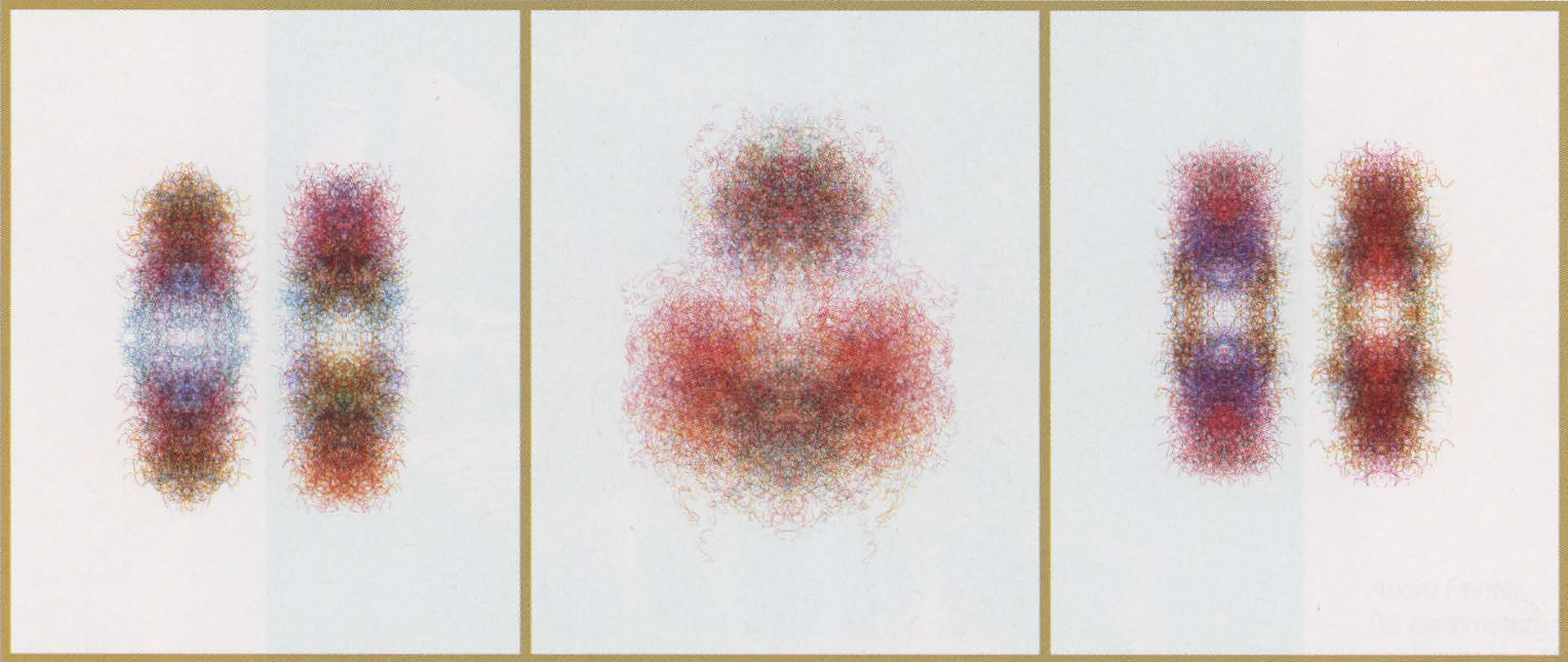Roman Verostko: Gaia Triptych
Artist(s):
Title:
- Gaia Triptych
Exhibition:
Creation Year:
- 2004
Medium:
- Pen-and-ink drawing on paper
Size:
- 16 inches x 36 inches
Category:
Artist Statement:
My work emerges from the tradition of early 20th-century pioneers who sought to create pure form. Such forms, as found in the work of artists like Kasimir Malevich, Piel Mondrian, Wassily Kandinsky, and Barbara Hepworth, became the focus of my own work in the late 1950s. Since then, in all my work, I have sought to create original forms that are unique realities in and of themselves without reference to other objects or images. With the advent of computers, I eventually found myself experimenting with coded procedures, “algorithms,” that mimed some of the methods I used in creating my art forms. Seeing the awesome power of recursive drawing, I became fully committed to developing a program of procedures based on my practice as a painter. In my current work, all forms are generated with original algorithms. The forms do not refer to other realities; rather, they are realities in and of themselves.
Titles
Titles for specific works or a series of works are usually derived from an evocative quality or association I find in the work. Often my works are simply given a composition or series number. The works, therefore, do not refer to events, ideas, objects, or subjects. They are objects to be experienced for their visual form similar to the way one might experience a musical form. Meanings For me these forms are visual celebrations of information-processing procedures embedded in today’s culture. The works are visual analogues of the coded procedures by which they were generated. They invite us to ponder how the stark logic of a coded procedure yields such surprising grace and beauty. By doing so, they serve as icons, illuminating the mysterious nature of code, the procedures underlying the shape of our evolving selves.
Technical Information:
TECHNICAL STATEMENT
For over 20 years, I have been working on a program of form generators for initiating and improvising art-form ideas. These generators are original drawing instructions (algorithms) that specify detailed procedures for visualizing form. With these generators, I explore form possibilities, make choices, refine forms, and compose a procedure for creating each work of art. The finished work is drawn with ink pens mounted on the drawing arm of a pen plotter. Controlling algorithms for all procedures are under continuing development in a program of routines I have titled “Hodos.”
Materials
Most of my algorithmic works are original pen-and-ink drawings on rag paper. Technical pens with refillable inkwells that contain permanent acrylic inks execute the drawings. Since the 1980s, all drawings have been executed with Houston Instruments multi-pen plotters coupled to PCs. Currently, I am using HI 7000 machines coupled to PCs operating on DOS. Note that some works do include occasional
brush strokes. In those instances, brushes were mounted on the plotter’s drawing arm in lieu of ink pens.
The Code
My software is written in elementary BASIC with DMPL as the
command language for driving the plotter. Historical routines dating back to the 1980s can be called on from the controlling program. A new work could be created today with routines dating from the 1980s. Some works now have two dates, the original algorithm date and the date of execution.
Technique
As an artist, I have always placed great value on technique.
Elementary pen-plotting tools and simple programming procedures have provided me with more challenges than I can exhaust in my lifetime. After more than 40 years and thousands of drawings, I have learned a lot about ink viscosities, pigments, paper surfaces, honing pen tips, and writing software fixes. Yet I feel like I have only begun
to explore the art of drawing with pen and paper.





